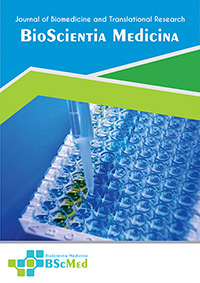Main Article Content
Abstract
Background: The integrity and quantity of mitochondrial DNA (mtDNA) in spermatozoa are considered critical for male reproductive potential. While qualitative damage like deletions has been linked to infertility, the significance of quantitative changes, specifically mtDNA copy number (mtDNAcn), remains debated. This study aimed to systematically review and meta-analyze the existing evidence to determine the association between sperm mtDNAcn and male infertility.
Methods: We conducted a systematic search of PubMed, Science Direct, and Scopus databases for observational studies published between January 2014 and December 2024. The search included studies that compared sperm mtDNAcn between infertile men, who were diagnosed with conditions such as oligozoospermia, asthenozoospermia, and teratozoospermia, and normozoospermic fertile controls. Data were pooled using a random-effects model to calculate the standardized mean difference (SMD) with 95% confidence intervals (CIs). Heterogeneity was assessed using the I² statistic.
Results: Seven case-control studies comprising 658 infertile men and 612 normozoospermic controls met the inclusion criteria. The quality of the included studies was moderate to high. The pooled data revealed that sperm mtDNAcn was significantly higher in infertile men compared to fertile controls (SMD = 1.28, 95% CI: 0.81 to 1.75, p < 0.00001). Significant heterogeneity was observed among the studies (I² = 88%, p<0.00001). Subgroup analysis based on infertility phenotype showed a consistently elevated mtDNAcn across oligozoospermia, asthenozoospermia, and oligoasthenoteratozoospermia (OATs). The funnel plot was largely symmetrical, and Egger’s test showed no significant evidence of publication bias (p = 0.12).
Conclusion: This meta-analysis provides strong evidence that an elevated sperm mtDNA copy number is significantly associated with male infertility. This quantitative alteration may serve as a crucial biomarker for assessing sperm quality and spermatogenic dysfunction. The findings suggest that increased mtDNAcn likely represents a compensatory response to underlying mitochondrial defects and oxidative stress, warranting further investigation into its clinical utility for diagnosing and managing male infertility.
Keywords
Article Details
As our aim is to disseminate original research article, hence the publishing right is a necessary one. The publishing right is needed in order to reach the agreement between the author and publisher. As the journal is fully open access, the authors will sign an exclusive license agreement.
The authors have the right to:
- Share their article in the same ways permitted to third parties under the relevant user license.
- Retain copyright, patent, trademark and other intellectual property rights including research data.
- Proper attribution and credit for the published work.
For the open access article, the publisher is granted to the following right.
- The non-exclusive right to publish the article and grant right to others.
- For the published article, the publisher applied for the Creative Commons Attribution-NonCommercial-ShareAlike 4.0 International License.





